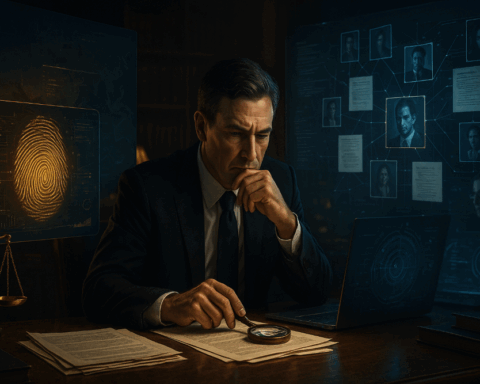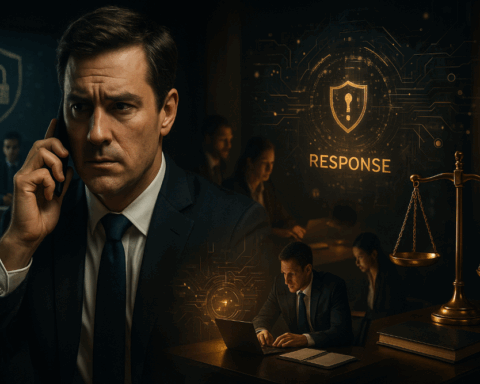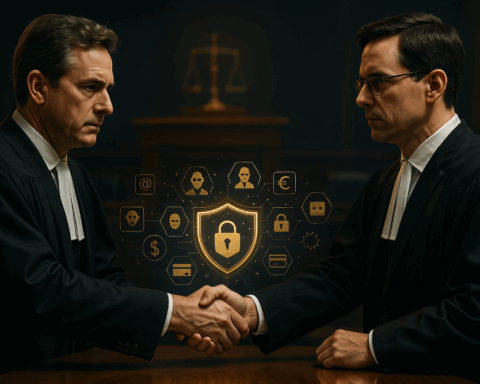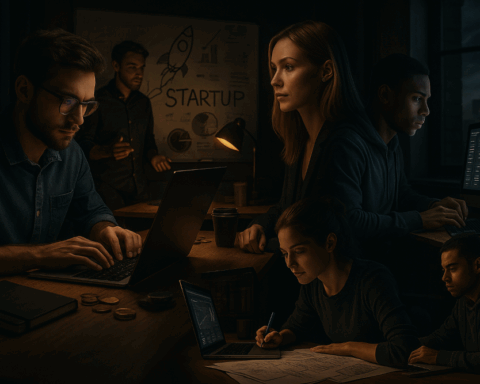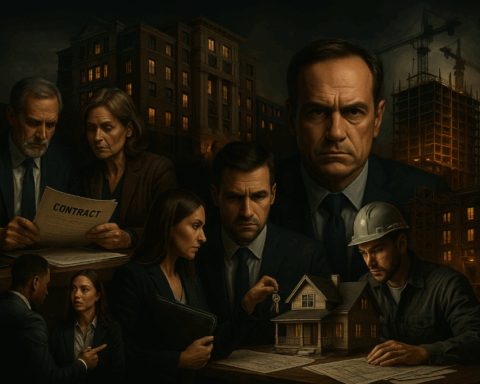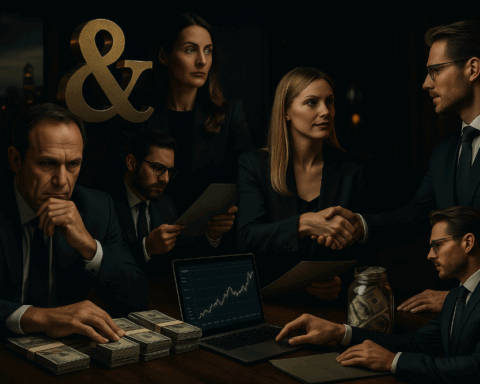The arts and culture sector does not merely serve as decorative embellishment for urban spaces or as temporary entertainment for audiences; it constitutes a complex ecosystem in which aesthetics, social critique, economic value, and institutional power constantly interact and influence one another. This sector provides a platform for individual imagination and collective reflection, while simultaneously functioning as a mirror that magnifies social tensions, renders them analyzable, and, when necessary, deconstructs them. The arts are not solely determined by intrinsic artistic quality; they operate within a network of financing, policy priorities, legal frameworks, and market dynamics that shape the contours of creative freedom. Anyone wishing to understand the relationship between art and society must not only listen to the nuance of the artwork itself but also examine the financial data and policy instruments that either enable or imperil its existence.
The public value of art and culture extends far beyond aesthetic appreciation; art functions as a semiotic instrument through which historical traumas, social injustices, and political conflicts are made visible and discussable. At the same time, the artist’s motivations are often ambivalent: passionate autonomy intersects with the pragmatic necessity of securing institutional support, audiences, and market revenues. Within that tension, both brilliant innovation and institutional dependency emerge, often inextricably intertwined. A proper understanding of the sector therefore requires not only an aesthetic reading but also a critical examination of governance, funding, and the power structures that determine who is heard and who remains marginalized. The following chapters delve deeper into these matters and provide comprehensive analyses of the different subfields — visual arts, performing arts, culture and heritage, education and community engagement, financial and policy challenges, and the prevailing trends that shape the cultural landscape of the future.
Visual Arts
Visual art stands at the intersection of personal exploration and public meaning-making; where an artist labors in solitude, a process of inquiry unfolds that is later interpreted and legitimized by institutions, collectors, and critics. Such interpretation is never neutral; it regulates, legitimizes, and ultimately determines which works reach museum halls and which remain confined to studio walls. The contemporary visual artist thus balances between autonomous experimentation and the need for visibility in a competitive marketplace. What emerges is a precarious equilibrium in which artistic integrity, exhibition logistics, and market pressures form a field of tension that demands perpetual recalibration.
Technological innovation has radically transformed the visual arts: digital techniques, AR/VR applications, and algorithmic image generation have not only opened new aesthetic horizons but also raised pressing legal and ethical questions regarding authorship, reproduction, and ownership. The call to redefine the concepts of “original” and “copy” is not an academic diversion; it strikes at the core of market valuation, gallery contracts, and the legal rights of creators. In an era where a digital artwork can be replicated and disseminated instantaneously, safeguarding the artistic substance necessitates a reconsideration of intellectual property law and, by extension, the institutional and legislative valuation of art itself.
Nevertheless, the material, sculptural, and tactile dimensions of visual art remain irreplaceable. The texture of paint, the resistance of bronze, the intimacy of textiles — all are integral to the hermeneutics of the artwork and shape the audience’s emotional and cognitive responses. Conservation ethics, restoration practices, and the logistics of exhibition are not secondary concerns but essential elements for the appreciation and survival of cultural heritage. Anyone who assumes digitalization can fully displace physical art underestimates both the complexity of material meaning and the institutional frameworks that sustain tangible artistic creation.
Performing Arts
The performing arts are by definition ephemeral and transitory: each performance constitutes a unique event which, though fleeting, may generate enduring cultural resonance. This temporal uniqueness places extraordinary demands on repertoire selection, rehearsal discipline, dramaturgical responsibility, and audience engagement. Theater, dance, and music operate within organizational frameworks that range from small collectives to large national institutions; funding structures and programming choices exert immediate influence over artistic risks and repertoire diversity. In contexts where audience development and financial viability are often at odds, programming requires strategic foresight without sacrificing artistic audacity.
The production of performing arts is inherently collaborative: directors, choreographers, musicians, scenographers, and technicians all share responsibility for the collective outcome. This collective character brings legal and ethical issues to the forefront: contractual arrangements regarding intellectual property, remuneration, working conditions, and liability are crucial, yet often insufficiently regulated. Structural vulnerabilities — such as precarious contracts and inadequate social protections for performers — erode professional sustainability and weaken the sector as a whole. A viable performing arts practice therefore demands a legal and policy approach that reconciles stability with artistic mobility.
Audience dynamics further complicate matters: shifting consumption habits, fragmented attention spans, and the rise of digital modes of engagement compel institutions to explore innovative formats of presentation and communication. Interactive and hybrid performances provide opportunities to expand audiences and engage new communities, but they also raise questions about the nature of live experience and the integrity of performative intent. Preserving the ritual of collective presence — being there, in the same space, in the same moment — remains a value that resists quantification through ticket sales or streaming figures, yet is indispensable for the societal role of the performing arts as a practice of community formation.
Culture and Heritage
The preservation of culture and heritage requires a delicate balance between conservation, accessibility, and reinterpretation. Heritage management is no static task but a dynamic process subject to changing societal norms. Institutions bear the responsibility of presenting historical narratives with nuance, acknowledging the often uncomfortable legacies of inequality, colonialism, and exclusion. Their capacity for critical reassessment of collections and curatorial practices is decisive for their legitimacy within a pluralistic society.
The legal and administrative aspects of heritage preservation are complex: regulations on monument protection, export licenses, restitution claims, and collection management demand specialized expertise and sensitive negotiation. Restitution cases and transnational claims expose the limits of legal ownership while raising broader moral debates on justice and reparation. Adequately addressing such issues requires not only legal acuity but also institutional willingness to confront one’s own history and commit to practices of transparency and restoration that extend beyond narrow legal remedies.
Environmental change introduces further complications: rising temperatures, fluctuating humidity, and extreme weather pose existential threats to collections and historic sites. Preventive conservation, adaptive restoration, and climate-resilient management strategies are urgent imperatives. Institutions must invest in scientific expertise and interdisciplinary cooperation to protect cultural capital from irreversible damage, even as limited budgets and politicized priorities constrain their choices.
Education and Community Engagement
Arts education and community engagement constitute the connective tissue between artistic production and societal participation; without deliberate educational initiatives, the reach of institutional cultural messages remains confined to a select audience. Such programs must transcend the instrumental — raising visitor numbers or facilitating fundraising — and instead be recognized as essential for democratic participation and cultural literacy. Arts education in both formal and informal settings cultivates critical thinking, empathy, and intergenerational as well as intercultural dialogue.
True community engagement extends beyond ad hoc workshops; it requires sustained partnerships with schools, social organizations, and neighborhood groups. Through such durable collaborations, reciprocal learning emerges in which artists and communities enrich one another’s knowledge and experience. These programs open pathways for socio-political interventions — in integration, reintegration, and social cohesion — where art functions not merely as decorative addition but as a catalyst for empowerment and transformation.
The methodology of arts education demands both professional and financial recognition. Underfunded education departments and precarious freelance structures erode continuity and quality. Investment in teacher training, impact evaluation, and inclusive curricula is essential. The sector must articulate the case for education not merely in rhetorical terms but through robust evidence of societal impact, reinforced by policy frameworks that embed and sustain educational infrastructures as a fundamental cultural responsibility.
Financial and Policy Challenges
Financing remains the Achilles’ heel of the arts and culture sector; reliance on public subsidies, project-based grants, and private sponsorship generates vulnerabilities that can distort artistic practices. Cultural funding cycles are often dictated by shifting political priorities, with long-term projects sacrificed to short-term policies demanding immediate results. The tension between artistic ambition and accountability to funders necessitates a strategic dialogue in which artistic autonomy is not reduced to a mere instrument of political agendas.
Economic models for cultural organizations require diversification without mission drift: commercial ventures, alternative revenue streams, and public-private partnerships offer opportunities, but risk subordinating artistic integrity to market imperatives. The commercialization of cultural goods must be carefully weighed against public service and accessibility. Meanwhile, digital transformation forces a rethinking of business models — streaming, digital licenses, and microtransactions provide new possibilities but cannot easily replace box office revenues and sponsorship.
Policy coherence across cultural strategies, education frameworks, urban development, and social agendas is critical. Fragmented policies lead to inefficient allocation of resources and underutilization of cultural capital. Governance, transparency in grant allocation, and accountability mechanisms are crucial to maintaining both public legitimacy and artistic quality. Policymakers must not only subsidize but also create structural conditions for sustainable artistic infrastructures, fair labor conditions, and broad accessibility — resisting the temptation of short-term political gain at the expense of cultural heritage and innovation.
Trends and Future Developments
Digitalization is a transformative force within the cultural field — not merely as a distribution channel but as a medium in which art is conceived and experienced. The digital domain expands possibilities for participation and dissemination but raises fundamental questions about valuation, copyright, and the ecological footprint of data-driven infrastructures. Emerging technologies such as artificial intelligence challenge traditional notions of authorship, compelling legal modernization and ethical frameworks that both stimulate innovation and protect creators’ rights.
Sustainability and ecological responsibility are becoming normative principles: circular exhibition design, carbon offsetting of tours, and material minimization are reshaping modes of production. This transformation requires investments and behavioral change at every level — from policymakers to individual creators. Institutions that embed sustainability at the heart of their strategies gain not only moral authority but also prepare for regulatory shifts and evolving expectations from audiences and funders.
Finally, inclusion has ceased to be a rhetorical flourish and is now a structural imperative for legitimacy and relevance. Diversifying curatorial voices, governance structures, and audience reach is not only a moral obligation but also an artistic enrichment, opening the canon to new narratives and reinterpretations. Any serious vision of the cultural future must therefore invest in representation, redress of historical injustices, and institutional mechanisms that entrench inclusion as a permanent principle. Only through such profound restructuring can the cultural field remain both resilient and meaningful in an ever-changing world.
Financial and Economic Crime
The arts and culture sector encompasses a vast and multifaceted range of activities and entities, including museums, galleries, theaters, music and dance ensembles, and individual artists. This sector is indispensable not only for promoting cultural exchange, artistic expression, and the preservation of historical heritage but also for its substantial economic contributions. Despite the immense societal and financial value it generates, the sector is inherently exposed to a spectrum of risks associated with financial and economic crime. The unique characteristics of this sector—marked by high-value transactions, intricate provenance issues, and often limited transparency—render it particularly vulnerable to diverse forms of financial and economic exploitation. These vulnerabilities are exacerbated by the subjective valuation of art, the sporadic regulatory oversight, and the complex, often opaque networks of ownership and funding.
Financial and economic criminality in the arts and culture sector can manifest in both overt and subtle forms, from sophisticated fraud schemes to systemic corruption. Each segment, whether dealing with tangible artworks, historical artifacts, or cultural funding, faces distinct risks that, if left unchecked, can erode trust in institutions, compromise cultural integrity, and inflict severe financial damage. The sector’s interplay between cultural value and monetary value creates fertile ground for illicit activities, making vigilance, transparency, and robust preventive measures absolutely essential.
1. Fraud with Artworks and Cultural Goods
Fraud within the arts and culture sector emerges in multiple guises, including forgery, embezzlement, and deliberate misrepresentation of the monetary or cultural value of artworks and artifacts. Forgeries of artworks, designed to be indistinguishable from genuine pieces, can be sold at inflated prices, generating illicit profits for perpetrators while inflicting significant financial harm on collectors, galleries, and museums. Such fraudulent activities also destabilize the market by eroding confidence in the authenticity and provenance of art, with long-term consequences for institutional credibility and collector trust.
Cultural goods, such as antiques and historical artifacts, are equally susceptible to manipulation or falsification to achieve higher valuations. This is not merely a financial concern; the misrepresentation of historical objects compromises cultural heritage and diminishes historical integrity. The absence of standardized appraisal methodologies and the opaque nature of transactions in the arts market amplify the likelihood of such fraudulent conduct, making due diligence and expert verification essential safeguards against deception.
The consequences of fraud extend beyond immediate financial losses. They include reputational damage for institutions and a broader erosion of public confidence in the sector. Preventive strategies, therefore, must integrate meticulous provenance verification, stringent transactional documentation, and regulatory oversight to uphold both financial integrity and cultural trust.
2. Money Laundering through Art Transactions
The high value, portability, and subjective pricing of artworks create fertile conditions for money laundering. Illicit funds can be “cleaned” through art acquisitions, where artworks purchased with illegal capital are subsequently sold or held as ostensibly legitimate assets. Such operations may involve inflated purchase prices, opaque sales channels, or anonymous transactions via galleries and auction houses.
The art market’s susceptibility to money laundering arises primarily from limited transparency and the fluctuating nature of art valuations. Unlike standardized commodities, art prices are negotiable and influenced by subjective factors, enabling the concealment of financial irregularities. Unchecked money laundering not only destabilizes the market but also threatens the credibility of law-abiding dealers and institutions, undermining systemic trust.
Mitigating these risks demands rigorous anti-money laundering measures, including comprehensive client due diligence, accurate transactional documentation, and consistent regulatory compliance. Auction houses and art dealers must operate under stringent oversight, ensuring that the sector is not exploited as a vehicle for criminal financial activity.
3. Corruption and Unethical Practices in Grants and Funding
Public funding in the arts and culture sector, including grants for projects, cultural institutions, and restoration initiatives, can become fertile ground for corruption and unethical conduct. Influential individuals or organizations may manipulate access to financial resources through bribery, nepotism, or preferential treatment, resulting in the misallocation of public funds.
Such corrupt practices distort resource distribution, favoring certain projects or institutions over others regardless of merit. This inequity undermines the quality, diversity, and accessibility of cultural programming and jeopardizes the integrity of public support for the arts. Without robust transparency and oversight mechanisms, public confidence in funding bodies and the sector as a whole may erode, impairing both cultural development and accountability.
Ensuring fair and transparent allocation procedures, along with vigilant monitoring and enforcement, is crucial to preventing corruption and maintaining the credibility and effectiveness of public arts funding programs.
4. Risks of Cybercrime and Digital Fraud
The increasing digitalization of the arts and culture sector—through online exhibitions, digital collections, and e-commerce platforms—has introduced new risks associated with cybercrime and digital fraud. Malicious actors may target intellectual property, manipulate digital catalogs, or execute fraudulent digital payment schemes. The consequences can range from direct financial losses to reputational damage, affecting artists, galleries, and cultural institutions alike.
Cybercrime exploits vulnerabilities in digital infrastructure and often involves sophisticated techniques that can bypass traditional controls. The growing reliance on online sales, virtual exhibitions, and cloud-based archival systems demands advanced cybersecurity protocols and continuous monitoring. Institutions must implement secure IT systems, conduct regular security audits, and develop rapid response strategies to safeguard both digital assets and sensitive institutional information.
Protecting digital environments is no longer optional; it is integral to preserving the trustworthiness and operational stability of cultural institutions. Failure to address these threats can compromise institutional credibility and expose stakeholders to financial and reputational harm.
5. Internal Fraud and Unethical Behavior within Art Institutions
Internal fraud and unethical conduct within art institutions, including museums, galleries, and cultural organizations, present persistent and complex challenges. Employees with access to financial resources or valuable artworks may engage in fraudulent activities such as theft, manipulation of sales records, or misreporting financial data. Such internal breaches can have profound financial, operational, and reputational consequences.
Preventing internal fraud requires rigorous internal controls, transparent accounting systems, and the cultivation of an organizational culture rooted in ethics and integrity. Regular audits, clear reporting protocols, and strong governance frameworks are critical in identifying irregularities and mitigating risks.
Ultimately, internal fraud not only threatens the financial stability of institutions but also undermines public trust, institutional credibility, and the broader integrity of the arts sector. A proactive approach, combining vigilance, accountability, and ethical leadership, is essential to safeguard both financial and cultural assets.
Privacy, Data, and Cybersecurity
The arts and culture sector represents a complex and dynamic ecosystem encompassing museums, galleries, theaters, music and dance productions, and cultural events. Its societal importance cannot be overstated: the sector preserves cultural heritage, fosters artistic expression, and supports creativity on multiple levels. However, the rapid integration of digital technologies and online platforms has introduced a set of unprecedented risks related to privacy, data protection, and cybersecurity. The safeguarding of sensitive information and the security of digital infrastructures are not mere administrative concerns; they are essential to maintaining the integrity, trustworthiness, and operational continuity of arts and culture institutions. Inadequate protection of data or failure to secure digital assets can result in financial loss, reputational damage, and legal liability.
Digitalization has transformed how cultural organizations operate, from ticket sales and donor management to online exhibitions and digital collections. While this expansion of digital services enhances accessibility and engagement, it simultaneously exposes institutions to sophisticated cyber threats and data breaches. The sector is particularly vulnerable due to the combination of valuable cultural assets, reliance on online platforms, and often limited investment in cybersecurity expertise. A comprehensive understanding of these challenges, coupled with proactive measures, is essential to protect both the operational and creative lifeblood of the sector.
1. Protection of Personal Data and Privacy
In arts and culture organizations, data collection extends across visitors, donors, artists, employees, and institutional partners. This data frequently includes personal identifiers such as names, contact information, payment details, and personal preferences. The increasing digitalization of ticketing systems, online memberships, and donor relationship management systems amplifies the need for rigorous personal data protection.
A salient example of privacy challenges involves online ticketing systems, where visitor information is collected for reservations, memberships, and donations. Any compromise of this data, whether through unauthorized access or cyberattack, can lead to identity theft, financial fraud, and reputational damage. Such breaches threaten not only individual stakeholders but also the institutional credibility of the organizations involved. Compliance with privacy laws, such as the General Data Protection Regulation (GDPR), combined with robust technical measures such as encryption, multi-factor authentication, and frequent security audits, is essential to mitigate these risks.
The protection of personal data is not a static task but requires continuous monitoring, staff training, and policy enforcement. Organizations must integrate data protection into daily operational practices, ensuring that every touchpoint where data is collected or processed is secure and aligned with legal and ethical standards. This approach builds trust among audiences, donors, and collaborators, reinforcing the sector’s credibility.
2. Cybersecurity of Digital Art and Cultural Assets
The proliferation of digital platforms for exhibiting and trading artworks, music, films, and other cultural products has created new vectors for cyber threats. Digital assets, including multimedia content, music files, and virtual artworks, possess both financial and cultural value, making them prime targets for malicious actors.
A concrete example is the protection of digital artworks against unauthorized access and piracy. Digital art is easily replicable and can be distributed without authorization, undermining both economic and intellectual property rights. Cybercriminals may target digital archives or platforms to steal, alter, or counterfeit works, threatening the integrity of cultural collections. Implementing digital watermarking, encryption, and controlled access systems is critical to preserve both authenticity and ownership.
Cybersecurity measures must extend beyond technical controls to encompass governance policies, user access protocols, and proactive monitoring systems. Institutions must recognize that digital assets are as valuable as physical collections, requiring equal attention to protection, insurance, and disaster recovery planning.
3. Security of Online Platforms and Digital Infrastructure
Websites, e-commerce platforms, and social media accounts are now central to how arts and culture organizations manage engagement, ticketing, and sales. These platforms are high-value targets for cyberattacks and require comprehensive security frameworks.
For example, a museum offering online access to exhibitions and educational content must ensure its website is resilient to attacks. Cyber incidents can result in malware distribution, data loss, service disruption, and reputational harm. Preventing these outcomes demands continuous software updates, firewalls, intrusion detection systems, and contingency planning to secure digital operations.
The security of online platforms is inextricably linked to operational continuity. Any compromise can have cascading effects on financial stability, public trust, and institutional credibility. Consequently, proactive security measures, combined with staff training and incident monitoring, are indispensable components of responsible digital management.
4. Protection of Intellectual Property and Creative Content
Artists, authors, and cultural professionals are frequently exposed to the theft or unauthorized use of their intellectual property. Copyrights, trademarks, and other protections are essential to safeguarding creative output and maintaining both economic and reputational value.
A concrete example lies in the digital distribution of music. Illegal downloads, streaming, and unauthorized sharing can result in significant revenue losses and damage to artistic reputation. Implementing digital rights management (DRM), proactive monitoring of online platforms, and pursuing legal remedies are critical strategies for defending intellectual property.
Intellectual property protection must also be integrated into institutional policies, ensuring that both internal and external stakeholders understand and respect usage rights. Combining legal, technical, and educational measures strengthens enforcement and prevents exploitation, preserving the integrity and sustainability of creative endeavors.
5. Compliance with Regulations and Industry Standards
Arts and culture organizations operate under a complex landscape of regulations and industry standards related to privacy, data, and cybersecurity. These regulations, ranging from national laws to international frameworks, impose requirements on data protection, information security, and breach reporting.
A salient example is compliance with the GDPR for entities processing personal data of European citizens. Organizations must implement technical and organizational measures to safeguard data, ensure transparency in processing, and maintain detailed records of data handling. Understanding these regulatory frameworks and embedding compliance into internal procedures is essential to avoid legal liability and reputational risk.
Regulatory compliance is not an administrative formality; it is a core component of organizational resilience. Systematic audits, staff training, and the integration of compliance requirements into operational processes are necessary to maintain the organization’s credibility and legal standing.
6. Incident Response and Crisis Management
Effective incident response and crisis management are indispensable when facing cyberattacks or data breaches. Rapid identification, containment, and remediation are essential to minimize damage and restore operational integrity.
For instance, a theater experiencing a data breach exposing ticket buyers’ personal information must immediately isolate the attack, notify affected individuals, investigate the cause, and implement measures to prevent recurrence. A detailed incident response plan, staff training, and scenario simulations are essential for managing security crises effectively.
Proactive crisis management ensures that organizations can respond efficiently, maintain stakeholder confidence, and safeguard both financial and cultural assets. By preparing for incidents, arts and culture institutions protect not only their operational continuity but also their reputation and public trust.



